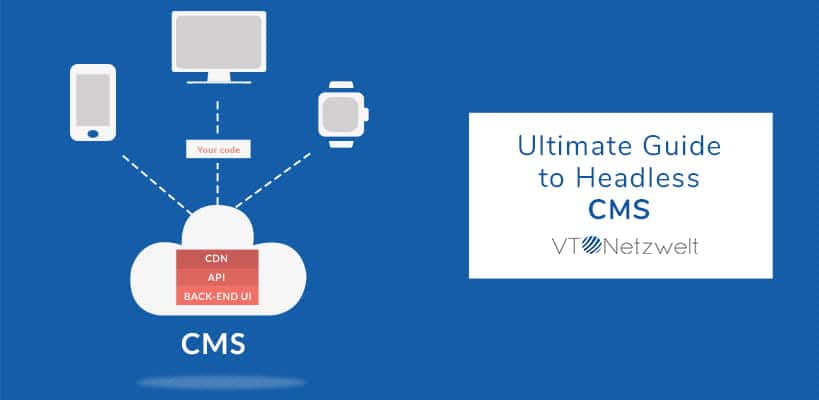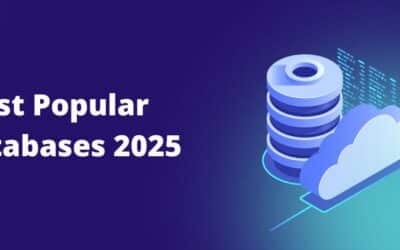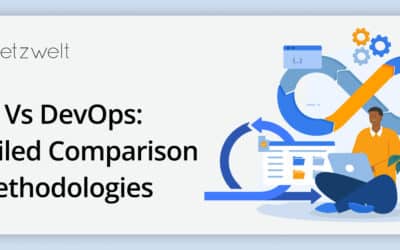Summary of the Article
Have a project in mind?
Schedule a CallUltimate guide to Headless CMS
Summary of the Article
In this blog, I will try to cover every aspect of headless CMS so that you have complete information required to choose the perfect CMS system for your application.
So without further ado, let’s get started –
What is headless CMS?
A headless CMS is nothing different from a traditional headless CMS. The only difference between the two is that the headless CMS lacks the display layer or the front-end user experience.
This gives the developers the flexibility to deliver content beyond websites and mobile applications such as smart watches, IoT devices, and even for Virtual Reality (VR) headsets.
How is headless CMS different from traditional CMS systems?
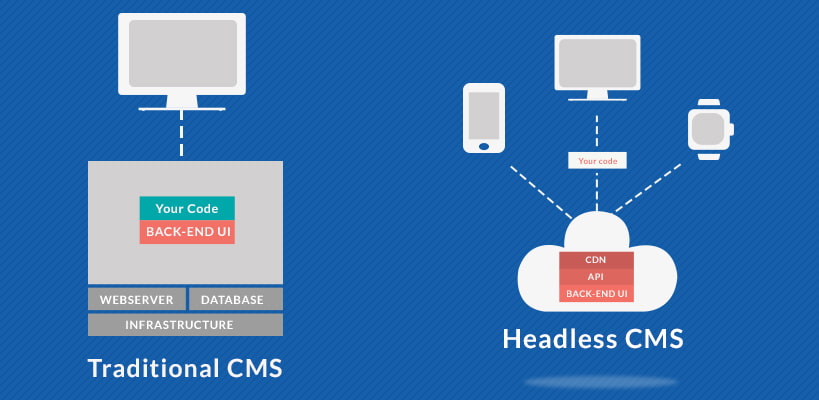
The above figure clearly demonstrates the difference between headless CMS and traditional (decoupled) CMS systems.
Headless CMS offers the advantage of refreshing the design without changing the whole CMS system.
Only one instance of headless CMS is required for display on any device either it is the website, mobile, tablets, IoT devices, etc.
Headless CMS offers centralized content management and the ability to distribute content in a universal format thereby allowing you to manage the entire platform from a single interface.
What is the need of headless CMS?
Having a responsive website is not enough in today’s era
The web world has moved beyond websites. The users are increasingly moving towards mobile apps, virtual reality, augmented reality, voice-controlled digital assistants, IoT devices and more. For the success of your business, you need to be present on each and every platform.
Traditional CMS systems lack flexibility
There is a need for a new CMS system that can handle omnichannel content management. Headless CMS uses an Application Programming Interface (API) which makes the content available on any device and any platform.
Why use headless CMS?
Better agility and flexibility
The digital transformation is taking place at a very fast pace. For your business to stay ahead, you need to give your users new digital experiences at a very fast pace. So you need to be more agile and test new ideas in days, not months.
Headless CMS works on Software as a Service model in a true sense thereby offering you the ability to deploy applications faster.
Stay ahead of your competition
Headless CMS offers the next-generation content management that enables brands to engage their customers in the growing number of channels.
Some interesting facts
We are living in a multichannel world comprising of desktops, laptops, mobile devices, tablets, smart watches, health bands, IoT devices, smart televisions, smart speakers, voice-assistants, and many more.
Here are some interesting facts which you must know –
- An average US consumer uses 3.5 connected devices each.
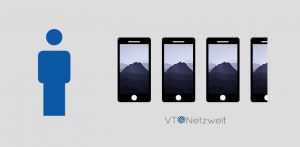
- 51.3% of people spend more time on their mobile devices than on desktops.

- The market share for Augments Reality and Virtual Reality (AR/VR) was $5.2 billion in 2016. It is expected to reach more than $162 billion by the year 2020.
Why the need of headless CMS arose?
For many years, we have been focusing on the traditional CMS systems which were more web-oriented. Here are the 4 main trends which paved the path for headless CMS –
Multichannel
As explained earlier, we are living in a multi-channel world. You don’t know as which device is being used by the user to consume content.
So if you don’t want to lose your customers, you need to make sure that your content is present on multiple platforms and channels.
A new system is required which can structure and manage content on multiple platforms. Although the traditional CMS offers structured content but the new paradigm is way out of line for them.
Digital transformation
Change is inevitable. To survive in the rapidly changing world, companies need to embrace digital transformation as part of their core strategy.
This digital transformation as forced even bigger organizations to act like a startup and quickly test new ideas and deploy them for their users.
The traditional CMS systems were designed for traditional business processes and cannot withstand the changing digital economy.
Microservices
Microservices approach represents one of the major shift in software architecture.
The earlier systems were built on monolithic architecture. So if the company decided to change the CMS, they had to start from scratch.
The new generation CMS system follows API first or headless approach which makes it easy to be integrated into any application without the worry of the technology stack.
Cloud
Today, every company is moving to the cloud. They have realized that running any system internally lacks flexibility, speed and is less efficient.
While the traditional CMS systems can be deployed on a cloud environment very easily but they are not true cloud solutions as they were not designed as Software as a Service product.
Advantages of using headless CMS
Free yourself from the worries of infrastructure
With headless CMS, you don’t need to worry about infrastructure anymore. You can free yourself from the worries of backups, database maintenance, server maintenance etc. You just need to manage your content and that’s all.
Enhanced security
Headless CMS offers better security than the traditional CMS application. Although you need to make sure that your code is secure but still it is more feasible in headless CMS as any patch or fixes on the security flaw ensures that it is fixed for all your customers.
Language independent
You can write your website or mobile application in any programming language using your own development process. Headless CMS offers you complete control over your application lifecycle.
Disadvantages of using headless CMS
- As headless CMS doesn’t have any specific channel support, it increases the work of developers when it comes to web development. Developers need to develop web-specific functionality themselves.
- Headless CMS is not favorable for marketers as they need to rely more on developers when creating a landing page or any specific layout.
What you should choose?
You can go with traditional CMS if –
- You only plan to build a website and does not have any future plans to support other platforms and channels
- You are using CMS as a development platform
- Your marketer is stuck with website mindset and doesn’t want to adopt the omnichannel marketing strategy approach.
Some typical use cases where you can use headless CMS
Creating a content hub for your organization
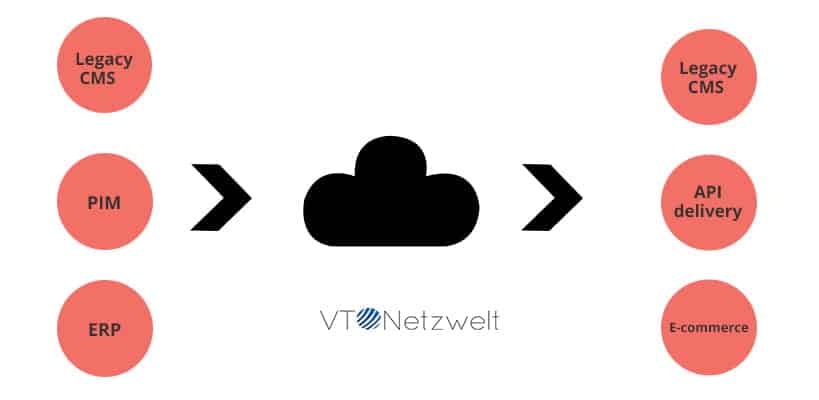
You can create a centralized content hub for your organization which will act as a master content management system. It will act as a single source of content for your whole organization.
With the central content management, you can avoid creating content at the departmental level which creates inconsistency.
You can import the whole content from various sources in the central repository where the employees can collaborate easily and you can also export it to your website or your custom enterprise application using API.
Making a CMS multichannel from the legacy CMS
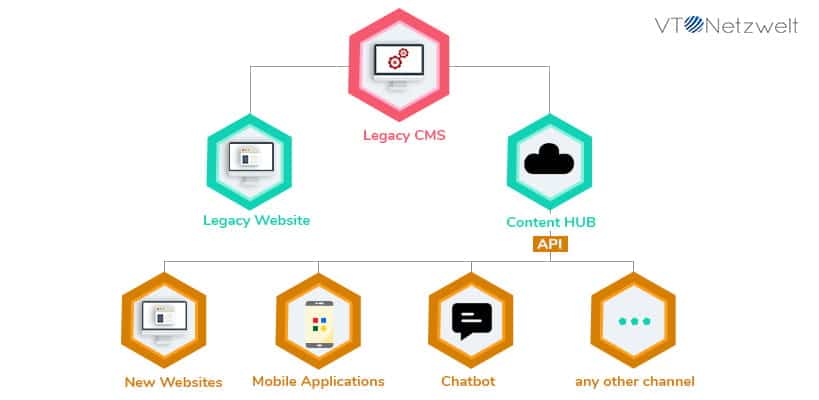
I understand that it is not an easy decision to replace a legacy CMS system if you have invested a good amount of money on it and already have a good number of user base.
In this particular scenario, you can use headless CMS as a proxy.
As it is very much clear from the figure above, you can export the whole content into the headless CMS and then use the API approach for multichannel.
Content accumulation
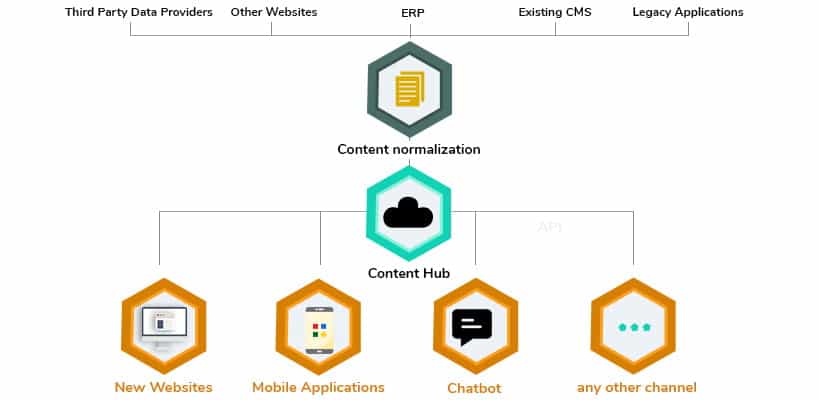
You may be having a system where you collect content from multiple applications such as ERP, legacy CMS, other websites, RSS feeds, etc.
In this case, you can easily collect the content from multiple sources, change it to the required format and then use the headless CMS so that you can make it available across multiple channels and platforms.
Closing comments
Headless CMS is the future of content management and multichannel support.
Its API-first architecture offers agility and flexibility. Now it’s your choice.
Choose headless CMS and gain an upper edge over your competitor. Request a call back from our industry experts.
